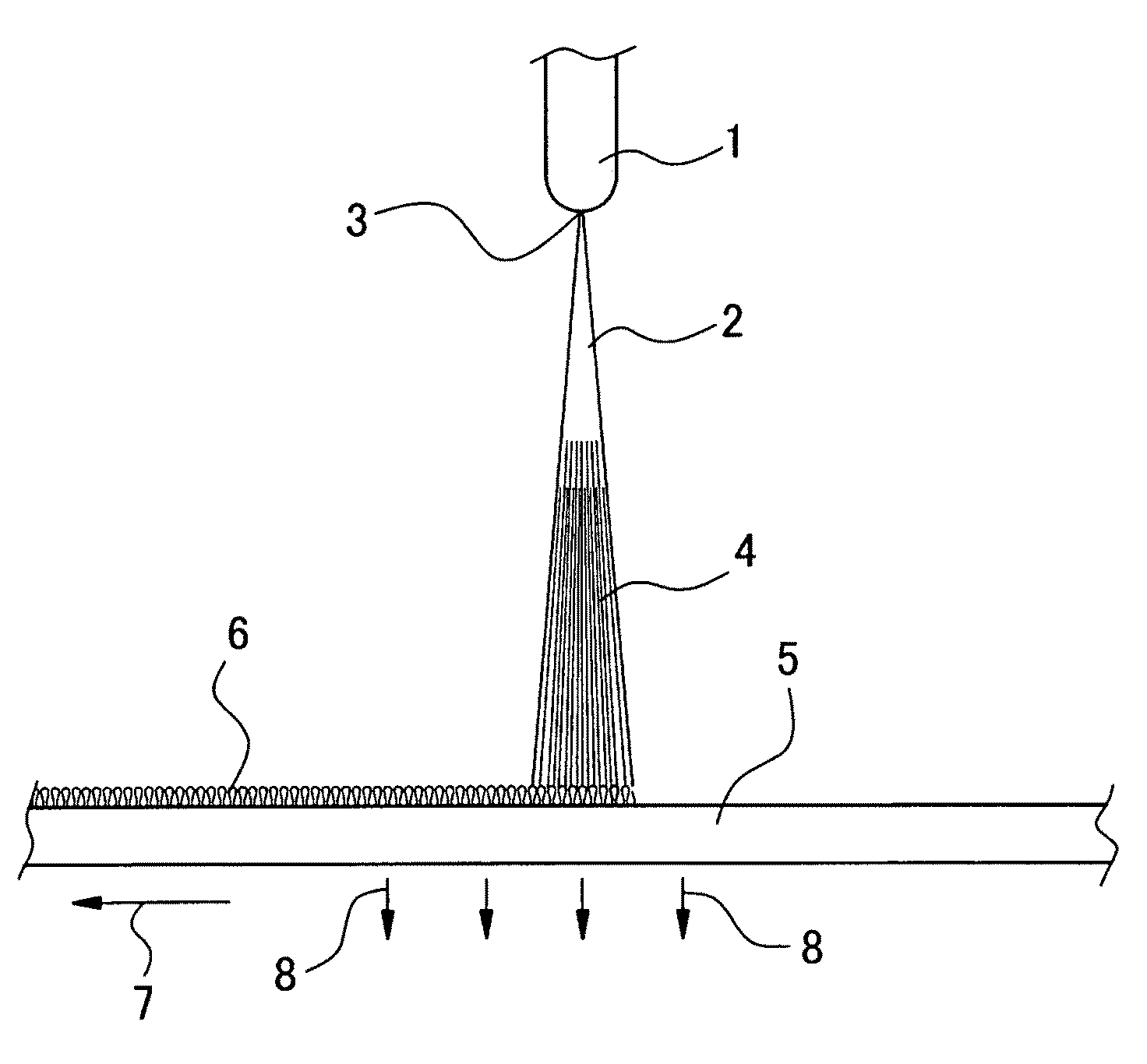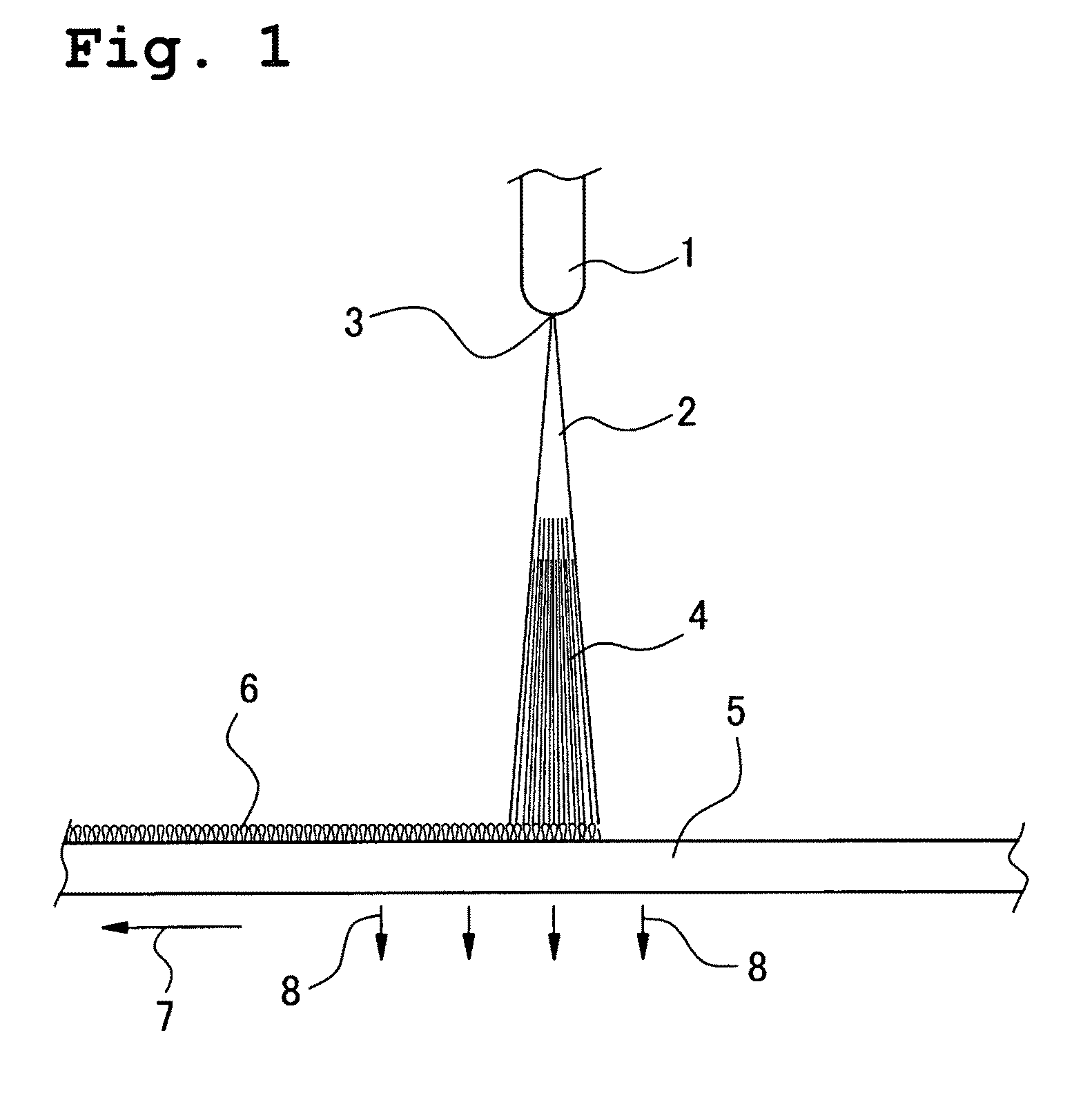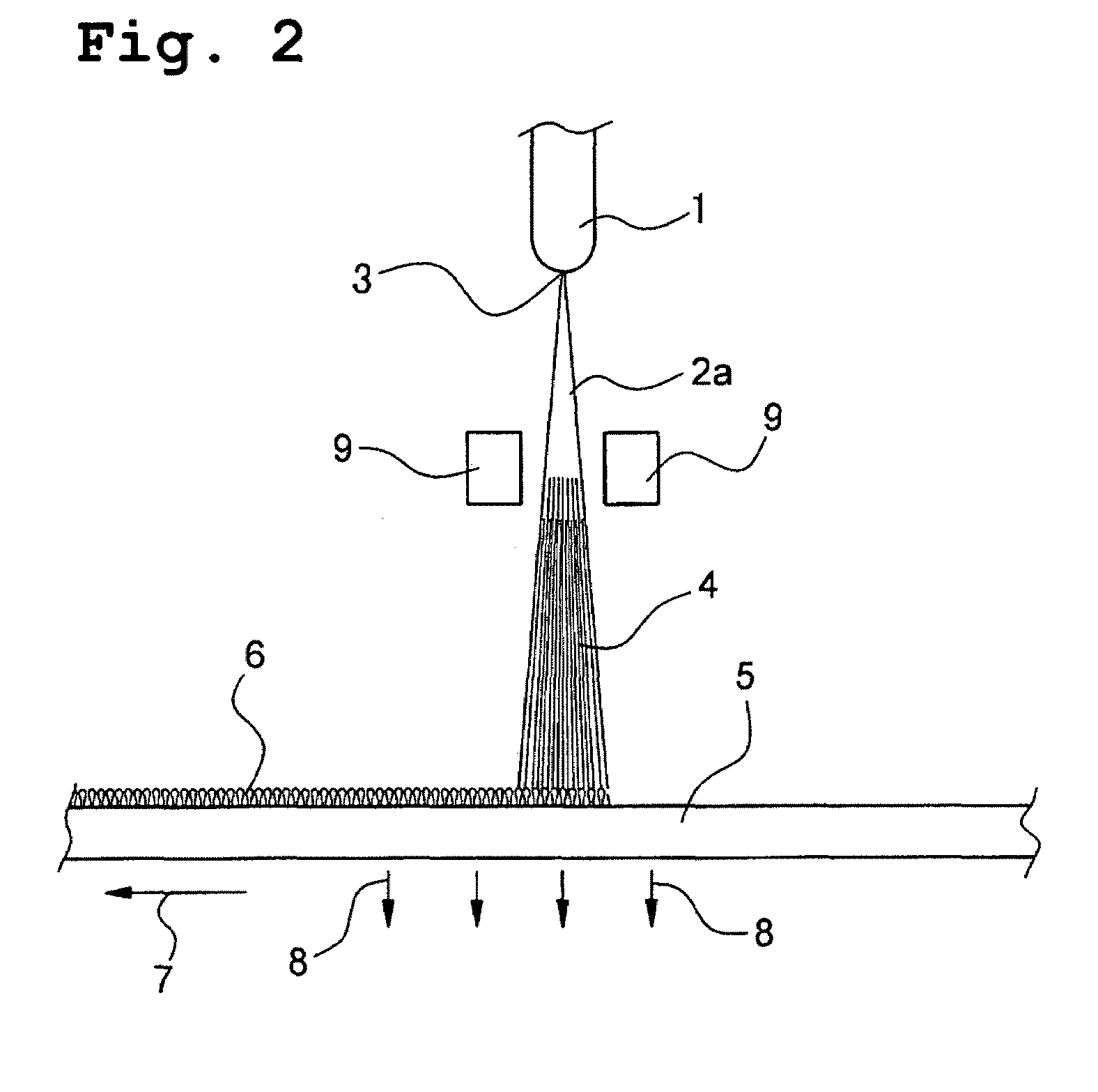Amorphous inorganic ceramic material and method of producing same
a technology of inorganic ceramics and inorganic ceramics, which is applied in the directions of weaving, transportation and packaging, yarn, etc., can solve the problems of deterioration in strength, inability to meet all the required properties of reinforcing materials, and unsatisfactory strength of resulting products, so as to reduce wasteful consumption of resources and excellent heat resistance and strength
- Summary
- Abstract
- Description
- Claims
- Application Information
AI Technical Summary
Benefits of technology
Problems solved by technology
Method used
Image
Examples
example 1
[0197]A meltable silicone resin comprising only MeSiO3 / 2 units as the siloxane units, and containing 5% by mass of hydroxyl groups (molecular weight: 1,000, average compositional formula: Me(OH)0.2SiO1.3, elemental ratio: SiCH3.2O1.5, softening point: 65° C.) (hereinafter, referred to as “meltable silicone resin α”) was subjected to melt spinning under an argon gas atmosphere at a temperature within a range from 130 to 140° C., using a monofilament spinning apparatus with an orifice diameter of 0.05 cm. The speed with which the fiber was wound onto the reel was 250 m / minute. In this manner, a silicone resin fiber with a diameter of approximately 20 μm was obtained. FIG. 3 shows a scanning electron microscope image (scale: 5 μm / division) of the silicone resin fiber obtained.
[0198]The thus obtained silicone resin fiber was immersed in a hydrochloric acid solution with a concentration of 20% by mass, and was left to stand for two days at room temperature. The fibers were then washed wi...
example 2
[0206]With the exception of replacing the meltable silicone resin a used in the example 1 with a meltable silicone resin containing approximately 60 mol % of MeSiO3 / 2 units and approximately 40 mol % of i-PrSiO3 / 2 units as the siloxane units, and containing 5% by mass of hydroxyl groups (molecular weight: 1,000, average compositional formula: (Me)0.6(i-Pr)0.4(OH)0.2SiO1.3, elemental ratio: SiC1.8H4.8O1.5, softening point: 75° C.) (hereinafter, referred to as “meltable silicone resin β”), a black fiber was obtained in the same manner as the example 1. The heating loss ratio was 17.8%, and the black fiber exhibited an elemental ratio of SiC1.2O1.7 and a hydrogen mass fraction of 0.1% by mass or less.
[0207]Determination of the aspect ratio for the fiber (average diameter of fiber / average length of fiber) revealed a result of at least 2,000.
example 3
[0208]With the exceptions of replacing the meltable silicone resin used in the example 1 with a meltable silicone resin containing approximately 60 mol % of PhSiO3 / 2 units, approximately 20 mol % of Ph2SiO units, and approximately 20 mol % of MeSiO3 / 2 units as the siloxane units, and containing 5% by mass of hydroxyl groups (molecular weight: 1,000, average compositional formula: Ph(Me)0.2(OH)0.3SiO1.1, elemental ratio:
[0209]SiC6.2H5.6O1.4, softening point: 92° C.) (hereinafter, referred to as “meltable silicone resin γ”), and replacing the 20% by mass hydrochloric acid treatment with a 98% by mass sulfuric acid treatment, a black fiber was obtained in the same manner as the example 1. The heating loss ratio was 51.2%, and the black fiber exhibited an elemental ratio of SiC1.4O1.5 and a hydrogen mass fraction of 0.1% by mass or less.
[0210]Determination of the aspect ratio for the fiber (average diameter of fiber / average length of fiber) revealed a result of at least 2,000.
PUM
| Property | Measurement | Unit |
|---|---|---|
| mass fraction | aaaaa | aaaaa |
| diameter | aaaaa | aaaaa |
| temperature | aaaaa | aaaaa |
Abstract
Description
Claims
Application Information
 Login to View More
Login to View More - R&D
- Intellectual Property
- Life Sciences
- Materials
- Tech Scout
- Unparalleled Data Quality
- Higher Quality Content
- 60% Fewer Hallucinations
Browse by: Latest US Patents, China's latest patents, Technical Efficacy Thesaurus, Application Domain, Technology Topic, Popular Technical Reports.
© 2025 PatSnap. All rights reserved.Legal|Privacy policy|Modern Slavery Act Transparency Statement|Sitemap|About US| Contact US: help@patsnap.com



